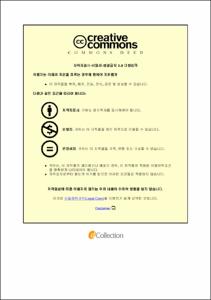급성 관상동맥 증후군으로 관상동맥 중재시술을 시행한 고 위험 환자에서 정기적인 심장 부하 검사의 효용성
- Alternative Title
- Routine Surveillance Stress Testing in High-Risk Patient with Acute Coronary Syndrome After Percutaneous Coronary Intervention
- Abstract
- IMPORTANCE The appropriate follow-up surveillance strategy for patients with acute coronary syndromes (ACS) who underwent complex percutaneous coronary intervention (PCI) remains unknown. OBJECTIVE To assess clinical outcomes according to follow-up strategy of routine stress- testing vs. standard-care alone in patients undergoing high-risk PCI with vs. without ACS. DESIGN, SETTING, AND PARTICIPANTS The POST-PCI (Pragmatic Trial Comparing Symptom-Oriented versus Routine Stress Testing in High-Risk Patients Undergoing Percutaneous Coronary Intervention) study was a randomized trial that compared follow-up strategies of routine functional-testing or standard-care alone after high-risk PCI. Patients were categorized as presenting with or without ACS. Kaplan-Meier event rates through 2 years and Cox model hazard ratios were generated, and interactions were tested. Patients were enrolled in the trial from 2017 through 2019 and a total of 1706 underwent randomization at 11 sites in South Korea. MAIN OUTCOMES AND MEASURES The primary outcome was a composite of death from any cause, myocardial infarction, or hospitalization for unstable angina at 2 years. RESULTS Among 1706 patients (mean [±SD] age was 64.7 ± 10.3; 1356 [79.5%] male and 350 [20.5%] female) randomized to receive routine functional-testing (n = 849) or standard- care alone (n = 857), 526 (31%) had ACS. Patients with ACS had less frequent comorbidities and less complex anatomical or procedural characteristics than those without ACS. However, patients with ACS had a 55% greater risk of the primary composite outcome [hazard ratio (HR) 1.55; 95% confidence interval (CI) 1.03–2.33; P = 0.034] compared to those without ACS. The 2-year incidences of the primary composite outcome were similar between strategies of routine functional-testing or standard-care alone in patients with ACS (6.6% vs. 8.5%; HR 0.76; 95% CI 0.40–1.44; P = 0.39) and in patients without ACS (5.1% vs. 4.9%; HR 1.04; 95% CI 0.62– 1.74; P = 0.88) (interaction term for ACS: P = 0.45). The incidences of invasive coronary angiography and repeat revascularization 1 year after PCI occurred more frequently in the routine functional-testing group compared to the standard-care group, regardless of ACS status. CONCLUSION AND RELEVANCE Despite being at higher risk for adverse clinical events, patients with ACS who had undergone high-risk PCI did not derive incremental benefit from routine surveillance stress-testing as compared with standard-care alone during follow-up.
- Issued Date
- 2024
- Awarded Date
- 2024-02
- Type
- Dissertation
- Alternative Author(s)
- Jinho Lee
- Affiliation
- 울산대학교
- Department
- 일반대학원 의학과
- Advisor
- Duk-Woo Park
- Degree
- Doctor
- Publisher
- 울산대학교 일반대학원 의학과
- Language
- kor
- Rights
- 울산대학교 논문은 저작권에 의해 보호받습니다.
- Appears in Collections:
- Medicine > 2. Theses (Ph.D)
- 파일 목록
-
-
Download
 200000736118.pdf
기타 데이터 / 2.78 MB / Adobe PDF
200000736118.pdf
기타 데이터 / 2.78 MB / Adobe PDF
-
Items in Repository are protected by copyright, with all rights reserved, unless otherwise indicated.